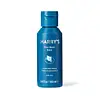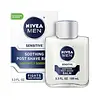What's inside
What's inside
 Key Ingredients
Key Ingredients

 Benefits
Benefits

 Concerns
Concerns

 Ingredients Side-by-side
Ingredients Side-by-side

Water
Skin ConditioningAloe Barbadensis Leaf Juice
Skin ConditioningPropanediol
SolventPPG-15 Stearyl Ether
EmollientPropanediol Dicaprylate/Caprate
EmollientOleth-20
CleansingDimethicone
EmollientHydrogenated Ethylhexyl Olivate
EmollientHydrogenated Olive Oil Unsaponifiables
EmollientBisabolol
MaskingOryza Sativa Bran Extract
Skin ConditioningJojoba Esters
EmollientHelianthus Annuus Extract
EmollientPhytosphingosine
Skin ConditioningSclerocarya Birrea Seed Oil
HumectantCucumis Sativus Fruit Extract
EmollientRosmarinus Officinalis Leaf Extract
AntimicrobialSilybum Marianum Fruit Extract
Skin ConditioningOcimum Sanctum Leaf Extract
Skin ConditioningGlycyrrhiza Glabra Root Extract
BleachingZingiber Officinale Root Extract
MaskingPanthenol
Skin ConditioningTocopheryl Acetate
AntioxidantGlycerin
HumectantTocopherol
AntioxidantPolysorbate 80
EmulsifyingMethyl Gluceth-20
HumectantAmmonium Acryloyldimethyltaurate/Vp Copolymer
Phenoxyethanol
PreservativeEthylhexylglycerin
Skin ConditioningAcrylates/C10-30 Alkyl Acrylate Crosspolymer
Emulsion StabilisingMenthoxypropanediol
MaskingChlorphenesin
AntimicrobialBenzyl Alcohol
PerfumingSodium Hydroxide
BufferingSorbic Acid
PreservativeParfum
MaskingBenzoic Acid
MaskingDisodium EDTA
Isododecane
EmollientPentaerythrityl Tetra-Di-T-Butyl Hydroxyhydrocinnamate
AntioxidantButylene Glycol
HumectantLimonene
PerfumingWater, Aloe Barbadensis Leaf Juice, Propanediol, PPG-15 Stearyl Ether, Propanediol Dicaprylate/Caprate, Oleth-20, Dimethicone, Hydrogenated Ethylhexyl Olivate, Hydrogenated Olive Oil Unsaponifiables, Bisabolol, Oryza Sativa Bran Extract, Jojoba Esters, Helianthus Annuus Extract, Phytosphingosine, Sclerocarya Birrea Seed Oil, Cucumis Sativus Fruit Extract, Rosmarinus Officinalis Leaf Extract, Silybum Marianum Fruit Extract, Ocimum Sanctum Leaf Extract, Glycyrrhiza Glabra Root Extract, Zingiber Officinale Root Extract, Panthenol, Tocopheryl Acetate, Glycerin, Tocopherol, Polysorbate 80, Methyl Gluceth-20, Ammonium Acryloyldimethyltaurate/Vp Copolymer, Phenoxyethanol, Ethylhexylglycerin, Acrylates/C10-30 Alkyl Acrylate Crosspolymer, Menthoxypropanediol, Chlorphenesin, Benzyl Alcohol, Sodium Hydroxide, Sorbic Acid, Parfum, Benzoic Acid, Disodium EDTA, Isododecane, Pentaerythrityl Tetra-Di-T-Butyl Hydroxyhydrocinnamate, Butylene Glycol, Limonene
Water
Skin ConditioningCyclomethicone
EmollientGlyceryl Lanolate
EmollientPanthenol
Skin ConditioningPropylene Glycol
HumectantIsopropyl Palmitate
EmollientTocopheryl Acetate
AntioxidantBisabolol
MaskingAllantoin
Skin ConditioningHamamelis Virginiana Water
AstringentGlycine Soja Hull
AbrasiveCalendula Officinalis Flower
Skin ConditioningCitric Acid
BufferingTriceteareth-4 Phosphate
EmulsifyingSodium Carbomer
Emulsion StabilisingPhenoxyethanol
PreservativeEthylparaben
PreservativeMethylparaben
PreservativePropylparaben
PreservativeButylparaben
MaskingParfum
MaskingWater, Cyclomethicone, Glyceryl Lanolate, Panthenol, Propylene Glycol, Isopropyl Palmitate, Tocopheryl Acetate, Bisabolol, Allantoin, Hamamelis Virginiana Water, Glycine Soja Hull, Calendula Officinalis Flower, Citric Acid, Triceteareth-4 Phosphate, Sodium Carbomer, Phenoxyethanol, Ethylparaben, Methylparaben, Propylparaben, Butylparaben, Parfum
Ingredients Explained
These ingredients are found in both products.
Ingredients higher up in an ingredient list are typically present in a larger amount.
Bisabolol is famous for its skin soothing properties. It does this by blocking inflammatory signals, helping to reduce your body's reaction to irritation.
This ingredient also interferes with the process of hyperpigmentation. This can help with reducing dark spots and uneven tone.
Bisabolol is an antioxidant. Antioxidants help fight free-radicals. Free-radicals are molecules that may damage your skin cells. By fighting these free-radicals, Bisabolol may slow down signs of aging.
Studies have shown Bisabolol to have antimicrobial properties and may be a fungicide. These properties help preserve a product's shelf life.
All these properties makes bisabolol a great skin barrier helper ingredient.
Bisabolol also helps the absorption of other ingredients.
Note: Synthetic Bisabolol has been shown to be less effective.
Learn more about BisabololPanthenol is a common ingredient that helps hydrate and soothe the skin. It is found naturally in our skin and hair.
There are two forms of panthenol: D and L.
D-panthenol is also known as dexpanthenol. Most cosmetics use dexpanthenol or a mixture of D and L-panthenol.
Panthenol is famous due to its ability to go deeper into the skin's layers. Using this ingredient has numerous pros (and no cons):
Like hyaluronic acid, panthenol is a humectant. Humectants are able to bind and hold large amounts of water to keep skin hydrated.
This ingredient works well for wound healing. It works by increasing tissue in the wound and helps close open wounds.
Once oxidized, panthenol converts to pantothenic acid. Panthothenic acid is found in all living cells.
This ingredient is also referred to as pro-vitamin B5.
Learn more about PanthenolParfum is a catch-all term for an ingredient or more that is used to give a scent to products.
Also called "fragrance", this ingredient can be a blend of hundreds of chemicals or plant oils. This means every product with "fragrance" or "parfum" in the ingredients list is a different mixture.
For instance, Habanolide is a proprietary trade name for a specific aroma chemical. When used as a fragrance ingredient in cosmetics, most aroma chemicals fall under the broad labeling category of “FRAGRANCE” or “PARFUM” according to EU and US regulations.
The term 'parfum' or 'fragrance' is not regulated in many countries. In many cases, it is up to the brand to define this term.
For instance, many brands choose to label themselves as "fragrance-free" because they are not using synthetic fragrances. However, their products may still contain ingredients such as essential oils that are considered a fragrance by INCI standards.
One example is Calendula flower extract. Calendula is an essential oil that still imparts a scent or 'fragrance'.
Depending on the blend, the ingredients in the mixture can cause allergies and sensitivities on the skin. Some ingredients that are known EU allergens include linalool and citronellol.
Parfum can also be used to mask or cover an unpleasant scent.
The bottom line is: not all fragrances/parfum/ingredients are created equally. If you are worried about fragrances, we recommend taking a closer look at an ingredient. And of course, we always recommend speaking with a professional.
Learn more about ParfumPhenoxyethanol is a preservative that has germicide, antimicrobial, and aromatic properties. Studies show that phenoxyethanol can prevent microbial growth. By itself, it has a scent that is similar to that of a rose.
It's often used in formulations along with Caprylyl Glycol to preserve the shelf life of products.
Tocopheryl Acetate is AKA Vitamin E. It is an antioxidant and protects your skin from free radicals. Free radicals damage the skin by breaking down collagen.
One study found using Tocopheryl Acetate with Vitamin C decreased the number of sunburned cells.
Tocopheryl Acetate is commonly found in both skincare and dietary supplements.
Learn more about Tocopheryl AcetateWater. It's the most common cosmetic ingredient of all. You'll usually see it at the top of ingredient lists, meaning that it makes up the largest part of the product.
So why is it so popular? Water most often acts as a solvent - this means that it helps dissolve other ingredients into the formulation.
You'll also recognize water as that liquid we all need to stay alive. If you see this, drink a glass of water. Stay hydrated!
Learn more about Water